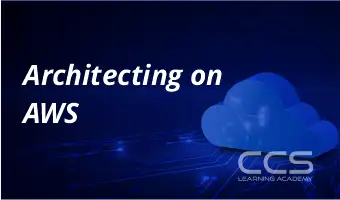Filter by Topic
Filter by Vendor
Introduction to Programming & Coding | Java Basics for Non-Developers (TTCODE101-J)
This course is a beginner level course for students who …
What you'll learn
Basic concepts of programming
Fundamentals of Java
Setting up and getting familiar with development environment, including IDE’s
Understanding object oriented development
Learning how to make classes, methods and objects
Learning loops, their importance and usage
Use of conditions and regular expressions
Learning importance of lists and arrays
Basic GUI skills
Error and exception handling
Formatting output and formatter class
Analyze and Visualize Data using Tableau
Course Description: The Analyze and Visualize Data using Tableau Certification …
What you'll learn
Basics about Tableau
How to connect, organize and slice data using Tableau
How to use multiple measures in a view
How learners can successfully show the relationship between various numerical values
How to map and customize data
How to view specific data
How to use quick table calculations to analyze the data in Tableau
How to use basic and advanced calculations in Tableau
How to extract data
What Tableau geocoding is
How to create using parameters
How to make dashboards and stories
Using Tableau to generate statistics
Using Tableau for forecasting
How to compare measures
How to assess the quality of data
How to use Tableau to perform exploratory analysis
Best practices while using Tableau
How to design visualizations for presentations
Architecting on AWS
Course Description In this authorized Amazon Web Services (AWS) course, …
What you'll learn
Making decisions based on the AWS-recommended architectural principles and best practices
Leveraging AWS services to make your infrastructure scalable, reliable, and highly available
Leveraging AWS managed services to enable greater flexibility and resiliency in an infrastructure
Making an AWS-based infrastructure more efficient in order to increase performance and reduce costs
Using the Well-Architected Framework to improve architectures with AWS solutions
To reinforce this material, you will also explore case studies with a variety of AWS infrastructure designs and strategies.
After the course, you will be fully equipped to build and scale a more efficient and reliable IT solution on the AWS cloud environment.
PL-900T00: Microsoft Power Platform Fundamentals
Course Description: Learn the business value and product capabilities of …
What you'll learn
Describe Microsoft Power Platform components
Describe Microsoft Dataverse, Connectors and AI builder
Describe cross-cloud scenarios across M365, Dynamics 365, Microsoft Azure and 3rd party services
Identify benefits and capabilities of Microsoft Power Platform
Identify the basic functionality and business value Microsoft Power Platform components
Implement simple solutions with Power Apps, Power Automate, Power BI, and Power Virtual Agents
Identify when to use each Microsoft Power Platform component application to create business solution
Learn the value of using Microsoft Power Platform to create business solutions
Learn the components and features of Microsoft Power Platform
Descibe the difference between Dataverse and Common Data Model
Explain use cases and limitations of business rules and process flows
Explain what environments, tables, columns, and relationships are in Dataverse
Learn how other organizations digitize their processes using Power Apps
See Power Apps in action and learn options for making your first app
Learn about what Power Apps is and its business value
See how Power Automate works and looks from the user’s perspective
Build a simple flow
Learn the business value and features of Power Automate
See how Power BI works and looks from the user’s perspective
Learn how to build a simple Power BI dashboard
Describe the business value and features of Power BI
Describe the business value and features of Power Virtual Agents
Build a basic chatbot
Learn essential components that make up Power Virtual Agents and chatbots
Oracle 11g: Programming with SQL I and II eLearning
Course Description: Oracle Database 11g delivers economies of scale on …
What you'll learn
Concepts and components of an Oracle Database 11g database, how to retrieve information from it using SQL, and the steps for sorting, limiting, modifying, and formatting this information
Steps for writing queries that convert data from one type to another, specify conditions, perform calculations on groups of rows or even tables, and return values from more than one table
Steps for manipulating queries to return the data you need, using subqueries and set operators, and manipulating the actual data using INSERT, UPDATE, DELETE, and other data manipulation language (DML) statements
Steps for creating, defining, and dropping tables, manipulating how their data can be viewed, and using schema objects to generate integers, improve queries, and rename tables
Steps for controlling user access to objects and for maintaining these objects by dropping columns and adding constraints and indexes
Steps for querying data dictionary views to view schema objects and for performing operations on large amounts of data, such as inserting data into multiple tables and merging table rows
Steps for managing data in different time zones in Oracle Database 11g, for managing time intervals, and for using datetime functions
Steps for retrieving data using subqueries and using regular expressions to search for, match, and replace strings
Oracle 11g: Programming with SQL Intro eLearning
Course Description: Oracle Database 11g delivers economies of scale on …
What you'll learn
Concepts and components of an Oracle Database 11g database, how to retrieve information from it using SQL, and the steps for sorting, limiting, modifying, and formatting this information
Steps for writing queries that convert data from one type to another, specify conditions, perform calculations on groups of rows or even tables, and return values from more than one table
Steps for manipulating queries to return the data you need, using subqueries and set operators, and manipulating the actual data using INSERT, UPDATE, DELETE, and other data manipulation language (DML) statements
Steps for creating, defining, and dropping tables, manipulating how their data can be viewed, and using schema objects to generate integers, improve queries, and rename tables
Steps for controlling user access to objects and for maintaining these objects by dropping columns and adding constraints and indexes
Steps for querying data dictionary views to view schema objects and for performing operations on large amounts of data, such as inserting data into multiple tables and merging table rows
Steps for managing data in different time zones in Oracle Database 11g, for managing time intervals, and for using datetime functions
Steps for retrieving data using subqueries and using regular expressions to search for, match, and replace strings
Oracle 12c: New Features for Administrators eLearning
Course Description: In this course, you’ll learn about the new …
What you'll learn
Enterprise Manager Cloud Control
Creating Container Databases (CDB) and Pluggable Databases (PDB)
Managing CDB and PBD, and Data Optimization
Using Automatic Data Optimization, Storage, and Archiving
Managing Security
High Availability and Database Management
Tuning Structured Query Language (SQL) and Using Automatic Database Diagnostic Monitor (ADDM)
Resource Manager, Online Operations, and Automatic Diagnostic Repository (ADR)
Transporting Databases and Managing Data
Oracle Database 11g: RAC Administration eLearning
Course Description: In this course, you will be introduced to …
What you'll learn
Install Oracle Clusterware and RAC
Administer a RAC Database and Oracle Clusterware
RAC Performance Tuning
Configure, Manage, and Use Database Services in a RAC environment
Administer Oracle Clusterware
Diagnose Oracle Clusterware and Node Management
High Availability in RAC
Add/Remove a node to/from a cluster
Patch Oracle Clusterware and RAC software










